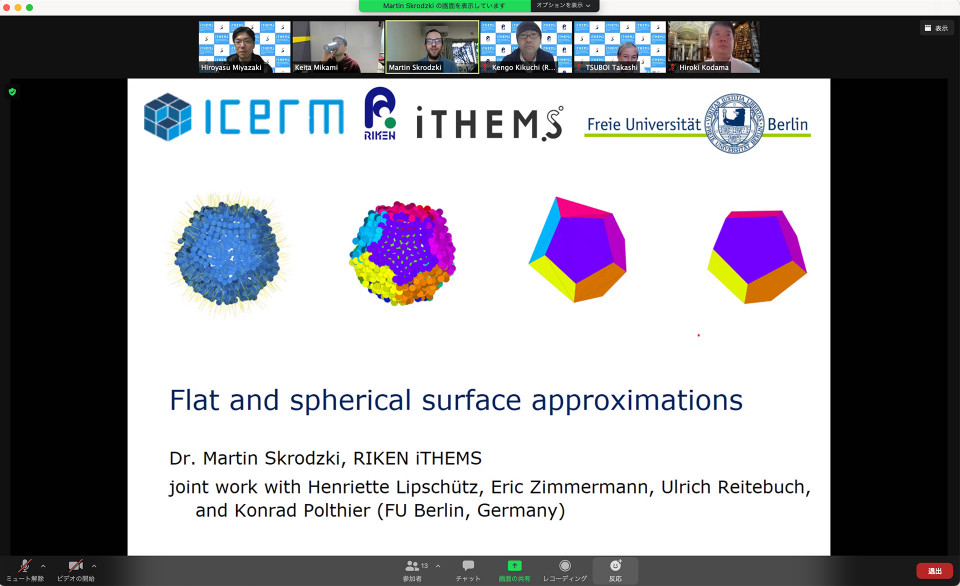Math Seminar by Dr. Martin Skrodzki on November 30, 2020
Our colleague Martin Skrodzki gave a farewell-talk in iTHEMS Math seminar on November 30.
The title of the talk was “Flat and spherical surface approximations”. He talked about two approaches to approximate surfaces by using flat objects and spherical objects.
In the first part, he explained the approximation using flat objects. Naively, there are two approaches to approximate surfaces. One is local and the other is global. In local approach, we need to get extremely many samples. In global approach, it will produce extreme torsion of surfaces. To remedy these problems, we should think of medium approach, i.e., patching of small simple flat objects (like covering of manifolds). This is called Variational Shape Approximation (VSA). The VSA has three steps: seeding, flooding and updating (and we iterate these recursively). This method gives us a very nice approximation of surfaces, but it still has some defects. Indeed, The recursive process does not always converge, the result depends on initial random choice of seeding, and it also depends on the artificial choice of the number of proxies we use. Therefore, Martin and his collaborators refined the VSA, by adding new steps called “splitting”, “Merging” and “Switching”. These steps avoids all defects above.
In the second part, he explained his project on approximating surfaces using spheres. He shows some extreme examples of surfaces which are not relevant for spherical approximation: cone and toilet paper. If you imagine a needle-shaped cone, then its intersection with a ball will be very small. On the other hand, if you thing of rolled paper, then its intersection with a ball have too large area. However, if the surface we want to approximate satisfies a relevant condition, we can obtain a condition on the radius of the ball we use to approximate the surface. During the lecture, he proposed an interesting question on the maximum/minimal area of the intersection of the ball and the surface, and there was an exciting discussion including the audience.


